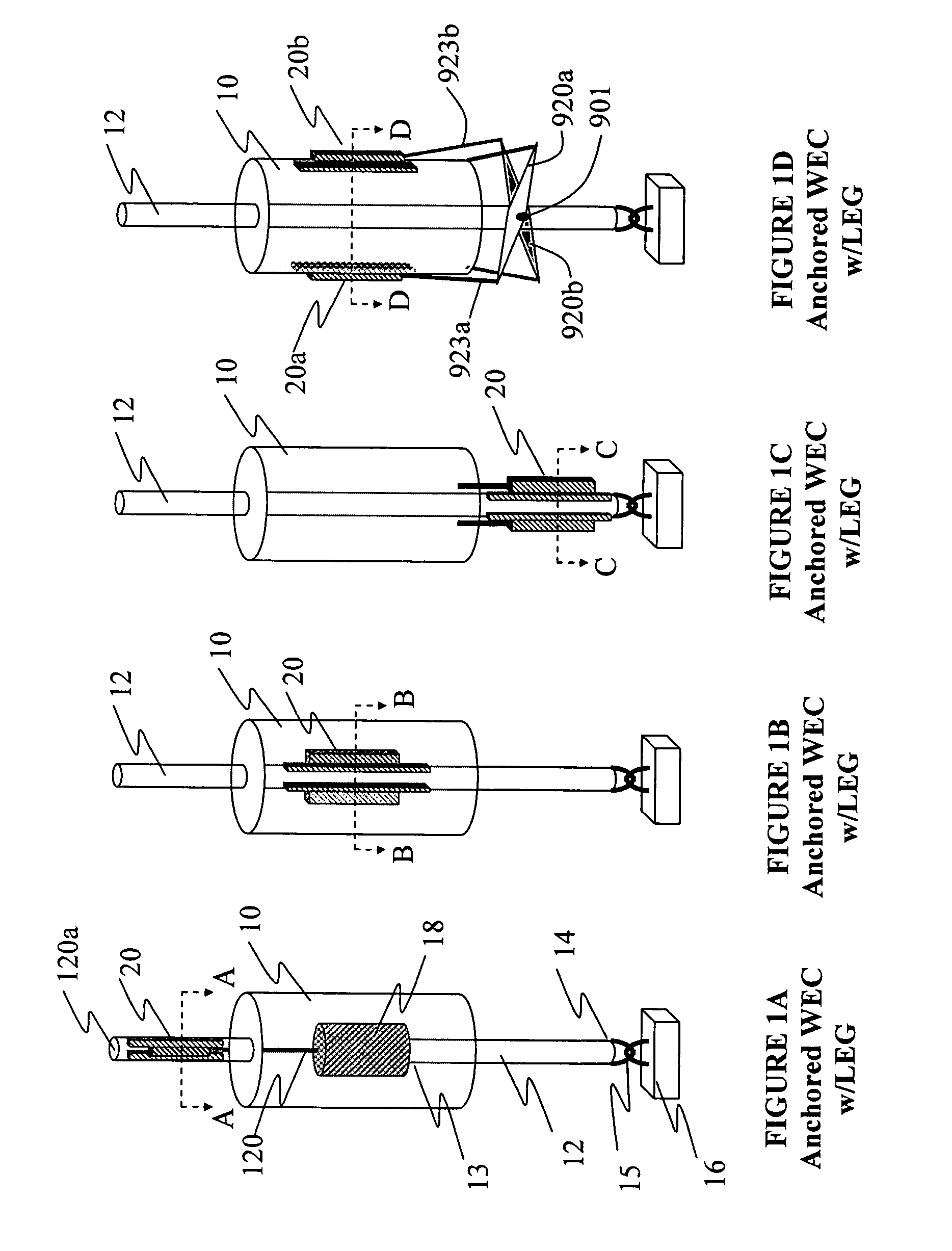Wave energy converters (WECs) with linear electric generators (LEGs)
a technology of linear electric generators and wave energy converters, which is applied in the direction of electric generator control, machines/engines, mechanical equipment, etc., can solve the problems of inefficiency of devices and systems employing them, performance, cost, reliability and/or survivability limitations of known wave energy conversion systems utilizing linear electric generators, etc., to avoid the constraining of the range of motion of the moving shell, reduce the effect of impact load and good and efficient coupling
- Summary
- Abstract
- Description
- Claims
- Application Information
AI Technical Summary
Benefits of technology
Problems solved by technology
Method used
Image
Examples
Embodiment Construction
I. Systems Suitable for Practicing the Invention;
[0059]Wave energy converters (WECs) suitable for practicing the invention may include systems of the type shown in FIGS. 6A, 6B, and 6C. FIG. 6A shows a neutrally buoyant shell 10 typically submerged below the surface of the ocean with a tethered or anchored vertical column (spar) 12. FIG. 6B shows a buoyant shell typically floating at the surface of the ocean also with a tethered or anchored vertical column (spar) 12. FIG. 6C illustrates a dual wave energy absorber where the shell 10 and the spar 12 move relative to each other, the shell generally in phase with the waves and the spar tending to move out of phase with the shell and / or the ocean waves. Each one of the WECs shown in FIGS. 6A, 6B and 6C may include one, or more, power take off (PTO) which includes a linear electric generator (LEG) device 20 connected between the “shell” and the “spar”.
[0060]In general, any WEC which includes first and second structures (e.g., a shell and...
PUM
 Login to View More
Login to View More Abstract
Description
Claims
Application Information
 Login to View More
Login to View More - R&D
- Intellectual Property
- Life Sciences
- Materials
- Tech Scout
- Unparalleled Data Quality
- Higher Quality Content
- 60% Fewer Hallucinations
Browse by: Latest US Patents, China's latest patents, Technical Efficacy Thesaurus, Application Domain, Technology Topic, Popular Technical Reports.
© 2025 PatSnap. All rights reserved.Legal|Privacy policy|Modern Slavery Act Transparency Statement|Sitemap|About US| Contact US: help@patsnap.com



